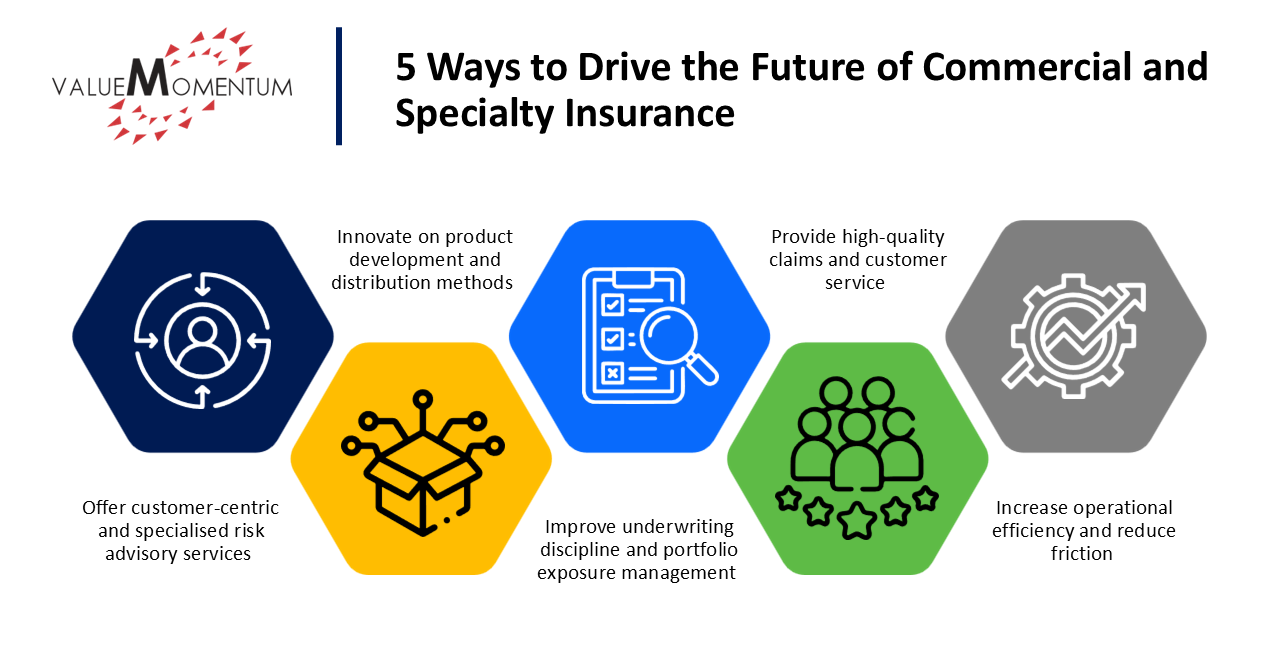Uncertainty around macroeconomics, geopolitics, climate change, and secure AI technology adoption are all impacting the global risk environment, creating new challenges for insurers to contend with. Recent years have seen an increase in demand for political risk coverage, marine, treaty assurance and trade insurance. These new and developing threats have insurers racing to assess risk accurately, provide the coverage their clients need and ensure their technology can scale with these challenges.
While the UK insurance market is currently the third largest in the world, these shifting risks present a moment of opportunity. For the UK to maintain its reputation as an industry leader, insurance firms need to simplify the ease of doing business while reducing the cost required to connect risk with capital.
Challenges UK insurers are navigating
The challenges facing UK insurers aren’t insurmountable. Insurance organizations need to re-assess and re-examine their business operations to create a more efficient, agile enterprise that is capable of driving innovation and delivering a customer-centric experience.
To do that, insurers must keep several key factors in mind. Maximising the benefits of new technologies often requires changes in business processes, operating models or ways of working. Leading with a solid understanding of change management, governance and stakeholder management across all levels is crucial for success.
Additionally, lack of understanding of real business and operational problems is a common challenge. Any innovation to deal with the shifting risk environment must be accompanied by effective communication of the business outcomes the changes will yield across the entire organization. The absence of a shared vision as to what those outcomes are can lead to a high-cost solution with an unclear return on investment.
Capitalising on new opportunities for UK insurers
The London insurance market contributes nearly £50 billion annually to the UK’s economy and is the world’s largest specialty market, earning nearly $160 billion in annual income. With the majority of its trading taking place overseas, it’s no surprise that 8% of the total global reinsurance market was controlled by London in 2022.
Given the global role of the UK insurance industry, especially the London Market, here are five ways UK insurers can continue to drive the future of commercial and specialty insurance:

1. Offer customer-centric and specialised risk advisory services
As customer expectations change, insurers need to offer simplified ways to do business and rich risk management services that align with clients’ business needs. This requires a deeper understanding of specific market segment needs and more specialised products and services. There is a growing trend to transform from being a pure indemnity payer to a strategic risk protection partner.
For example, MGAs such as Connect Underwriting and Novata have launched specialised services to meet the need for more customer-centric offerings. Connect Underwriting and its presence in Lloyd’s are intended to expand broker access to specialty reinsurance products, including global property, terrorism and energy. Last fall, Novata expanded its offerings around sustainability management, carbon emissions and aligning with the Corporate Sustainability Reporting Directive (CSRD). Homing in on specific customer needs can help insurers resonate more deeply with a particular target audience.
2. Innovate on product development and distribution methods
With environmental, social and governance (ESG) requiremetnts becoming a key concern for many, and the 2050 net zero deadline creeping nearer, regulations will likely continue evolving for insurers and their customers in the UK. There is a strong opportunity for insurers to cultivate relevant specialty lines to steward customers through these changes.
For instance, Aon launched carbon capture and storage insurance to support its international clients that specialise in storing and transporting carbon dioxide. This product not only opened a new avenue for Aon, but it also helps its clients reach their ESG goals. Through a culture of continuous innovation and taking a tech-first approach, firms can be positioned to move swiftly when a new risk or need emerges, giving them the market advantage over their competitors.
3. Improve underwriting discipline and portfolio exposure management
Strong underwriting lies at the heart of maximising profitability while reducing impact on premiums. 2024 was the sixth costliest year on record for insurers, due largely to major weather events. While the protection gap decreased from the previous year, it is clear that insurers must invest in their risk management and underwriting capabilities to ensure they are reducing their losses and are able to support policyholders when catastrophes strike.
For example, Ki Insurance adopted an algorithmic approach to underwriting several years ago, pairing underwriters with data science experts to drive business growth. Continuous refinements to this approach are clearly helping the insurer successfully manage its risk; Ki was awarded Most Innovative Insurer – London Market at last year’s British Insurance Technology Awards.
4. Provide high-quality claims and customer service
Newer offerings can enable insurers to support their customers better than ever. For instance, parametric, sensor-based insurance can provide early warnings and automated loss notification, enabling a rapid response to recover from issues like water leakage.
For instance, these sensors can detect issues such as build-ups of condensation in communications rooms. If unresolved, these types of build-ups can lead to larger water leaks, impacting organisations’ computing networks and causing costly business disruptions. Not only does this type of insurance prevent large-scale damage, but it utilises new technology to offer the customer reassurance.
5. Increase operational efficiency and reduce friction
Duplication of effort and other inefficiencies are not uncommon across the complex commercial insurance value chain. This duplication is not only cumbersome but also expensive, with that cost often indirectly passed onto the customer.
Hybrid MGAs such as Bridgehaven use a fronting company to retain some risk and cede the remaining risk to the reinsurer, reducing the cost of distribution and compliance as well as capital requirements. Taking a big-picture approach to assess what can be done differently and more efficiently creates a more streamlined way of working that also becomes easier to navigate for customers.
For UK insurers to capitalise on the opportunities available in the commercial and specialty lines market, they need to be committed to implementing the underlying technology to support a state-of-the-art insurance organisation. Technology is no longer a back-office function; it is now a strategic boardroom component at the forefront of decision-making and operations. Any UK insurer looking to capitalise on new opportunities needs to be looking at their technology strategy and adoption plans.
The UK’s commercial and specialty insurance market is a global leader, yet there are opportunities waiting for the insurers who take action. Offering specialised and customer-centric risk advisory, providing innovative products, improving underwriting discipline and customer service and reducing friction across the insurance life cycle are all ways to stand out in a crowded market.
To learn more about how insurers can drive growth by investing in their technology, read our whitepaper “Driving Business Value With Insurance Analytics.”




